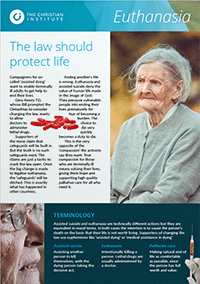High Court judges have today ruled that doctors cannot kill a severely paralysed man, in a landmark euthanasia case.
The ruling has been welcomed by pro-lifers, who say legalising euthanasia would put vulnerable people at risk.
Tony Nicklinson’s ‘locked-in’ condition means his mind is active but he cannot move most of his body. He communicates by blinking.
Euthanasia
Mr Nicklinson was seeking euthanasia, and not assisted suicide.
The High Court also ruled against a second man, known only as ‘Martin’, who asked for the right to call on others to help him die.
Lord Justice Toulson, who was sitting with two other judges, noted that the cases of Mr Nicklinson and Martin were “deeply moving”, but it was not for the court to change the law in this area.
Consequences
The judge also said: “A decision to allow their claims would have consequences far beyond the present cases.”
Mr Nicklinson said he would appeal.
The British Medical Association commented that the court had made “the right decision”.
Protect
And Dr Andrew Fergusson, of the Care Not Killing Alliance, said the ruling “confirms the simple truth that the current law exists to protect those without a voice: the disabled, terminally ill and elderly, who might otherwise feel pressured into ending their lives”.
Dr Fergusson added: “The ruling confirms the view that even in a free democratic society there are limits to choice.
“Every law limits choice and stops some people doing what they might desperately wish to do, but this is necessary in order to protect others, especially the most vulnerable in our society.”
Risk
In March, when Mr Nicklinson was given the go-ahead to challenge the law, a professor of palliative medicine, Baroness Ilora Finlay, warned: “The difficulty is you set a precedent.”
Baroness Finlay said: “If you change the law because one person wants something, who do you remove that protection from and put at risk? We have laws to protect the whole of the population.”
The Daily Telegraph said at the time: “This is not a ‘right-to-die’ case but one involving the ‘right to be killed'”.


